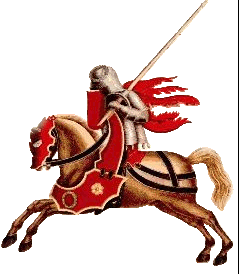Gray The Bruce Older Writings
Mostly Scholarly Journals
Before he started publishing short stories, he published in quite a few scholarly and edited editions of text books. These are linked here.
"Chapter 4: Technology and the Guide." St. Martin's Guide to Writing Instructor's Resource Manual, 8th ed. New York: Bedford/St. Martin's, 2007: 67-78.
This chapter for the instructor's manual to the popular St. Martin's Guide to Writing discusses ways to use technology in the composition classroom -- particularly in writing classes that use the Guide to Writing. He also provided a series of "tech tips" that appear throughout the Instructor's Resource Manual.
"Gathering Our Thoughts: How and Why We Should Help Students Write Together." Pacific Coast Philology 42 (2007): 86-109.
Noting that our students are increasingly being asked to write together in classes outside of English Composition, and to write collaboratively in the workplace, this article argues that writing instructors ought to be teaching students to write together. The article draws on group dynamics research to suggest some ways that instructors might teach collaborative writing skills while minimizing the threats of free riders, grade anxiety, groupthink and other common team problems.
"Interdisciplinary Sage: Reading Neal Stephenson Across the Curriculum." In Tomorrow through the Past: Neal Stephenson and the Project of Global Modernization Ed. Jon Lewis. Cambridge, UK: Cambridge Scholars Press, 2006: 1-21.
This article appears within a collection of essays on science-fiction author Neal Stephenson, himself the author of works like Snow Crash, The Diamond Age, The Baroque Cycle, and Cryptonomicon. The collection includes eight essays on the author, as well as an interview with Stephenson based on questions submitted by the contributing scholars. Several of those essays had been presented by their respective authors at the 2006 XXth Century Literature Conference at the University of Louisville.
"Signifying Nothing? A Secondary Analysis of the Claremont Authorship Debates." EMLS 12.2 (September 2006). 26 Dec 2006 Early Modern Literary Studies home page (issue 12.2) or direct to article.
In the 1990s, a war of words erupted in the pages of Computers and the Humanities between two scholars at the Claremont Colleges (Ward Elliott and Robert Valenza) and famed attributionist Don Foster (the fellow best known for identifying the author of Primary Colors as Joe Klein). Elliott and Valenza had unveiled a massive battery of attributional tests designed to determine whether Shakespeare's works might have been written by Christopher Marlowe or any one of nearly 50 other Renaissance figures. Their conclusion: No, Shakespeare's works do not appear to have been written by any of the other writers, though they are remarkably consistent with each other. Foster, however, argued that most of the tests were flawed, and that the attributionists had methodological problems. Scott's article, "Signifying Nothing," attempts to judge that debate now that it appears to have settled down. It concludes that although some tests probably ought to be set aside, the overall battery is robust enough that its implications do not change much. The article also notes that Marlowe's Edward II continues to do well in Shakespeare-calibrated attribution tests, roughly as well as known collaborations like Titus Andronicus, and suggests that it might be wise to start wondering why it is such an anomaly.

Copyright 2000 - 2019 Gray Scott. Please ask for permission before you copy any of this site or especially content from his short stories. He can be reached at his first name at graythebruce.com . Sorry to be obscure but the trolls harvest enail addresses for spam and he already gets enough.